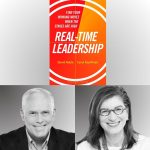Podcast Themes
Multiple perspectives on a topic that you are curious about!

Alan speaks about Bill Campbell’s journey and the various transitions he has been through – from being a Football Coach to becoming a Business Executive to Leadership Coaching where he worked with several luminaries such as Steve Jobs, Founders of Google, Eric Schmidt, Sheryl Sandberg, Al Gore. He also speaks about how Bill transitioned from one canvas to another and what stayed the same across these stints.

Having moved from the army setup to the corporate world then onto a government organization and back to the corporate world, Raghu has worn many hats in his professional life. All of these shifts have involved transitioning across cultures- some well-established, others being established and yet others, desperately needing a change in culture! Hear Raghu talk about how he navigated these transitions to integrate into the organization he joined.

Raghu talks about how we could think about leveraging the pool of leadership talent that the army produces. He compares India to markets such as US, where there have been generations of Corporate Leaders who spent their early years in the Armed Forces. This is not just about providing an education around some of the elements of business. It is a complete rewiring that needs to happen.

Carol and David speak about how leaders who inherit a new context (external candidates or even internally promoted individuals) need to tune into the vantage point based on various priorities and preferences people in the ecosystem (within the company or outside) might have.

Stephen speaks about the Trust equation that’s often attributed to Charles Green and David Maister. He reconciles his model around Trust with the various variables in the Trust Equation (Credibility, Reliability, Intimacy and Self Orientation). He also goes on to make the distinction between being Trustworthy and Extending Trust in a relationship.

Jeffrey speaks about how we need to be careful about how we signal our warmth vs how we project our competence especially in situations where people are meeting you for the first time.

Manjari speaks about some of her insights around how she would settle into a new role. She specifically speaks about how her approach changes depending on the context in that situation.

Raghu speaks about the Nakula archetype that often creates the emotional infrastructure in an organization. He speaks about how such leaders might have to flex and demonstrate some of their other elements to build trust when they move to a new context. He also speaks about the link between having this emotional infrastructure and agility that a company might need to respond to sharp changes in the reality of the world.

Alisa speaks about how Entrepreneurs need to be thoughtful about assimilating new leaders and equip the incoming leaders with adequate context for them to succeed. She also goes on to speak about how Entrepreneurs need to re-onboard themselves as the context changes.

Sukhinder speaks about her transition from Google to Accel as a CEO in residence post which she moved in as a CEO at Polyvore. She speaks about some of the challenges in establishing a healthy dynamic with the Founder and the Board and the criticality of values fit in addition to complementary of skills and capabilities.

Amy speaks about how psychological safety becomes even more critical in the context of a leadership transition. She speaks about the criticality of the incoming leader to portray humility and curiosity as he/she settles into a new context. She talks about the case of Alan Mulally, who transitioned from Boeing to Ford Motor Company when it was bleeding about USD 17 Billion dollars a year. She speaks about how he embodied situational humility to transition effectively to win the trust and respect and drive the turnaround.

Darleen sheds light on how leaders and organizations can get more thoughtful in the way they get the cultural assimilation right when a new leader comes on board. Leadership derailment is a lot more about Leaders missing out on the “how” of a job rather than the “what” of the job.